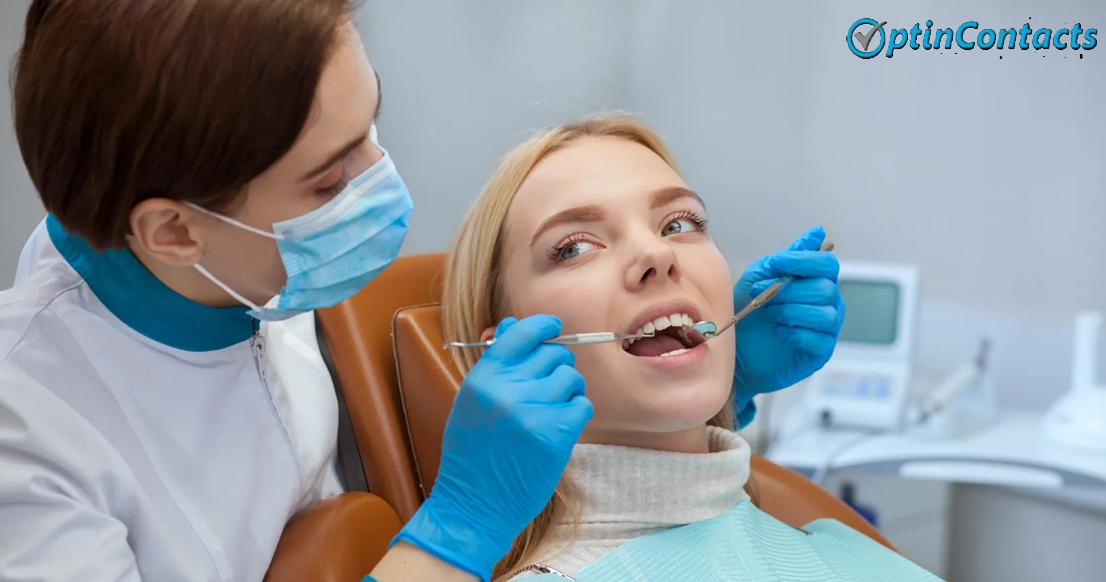Health
Vision Tailored for You: The Case for Personalized Eye Care in a Boutique Setting

Introduction to Personalized Eye Care
Maintaining optimal eye health is more critical than ever in today’s digital age, where screens dominate much of our daily interactions. Personalized eye care represents a modern approach that shifts the focus back to the individual, tailoring treatments and solutions to fit one’s needs. This involves a comprehensive examination that considers unique eye shapes, daily habits, and personal preferences, delivering a more precise diagnosis and treatment strategy. The outcome usually dramatically improves vision quality and overall eye comfort, setting it apart from standard one-size-fits-all solutions.
Emphasizing the importance of detailed care, custom eye care can address particular visual challenges with tailored solutions surpassing typical eyewear’s effectiveness. By engaging in this custom approach, patients can experience heightened clarity and a more satisfying visual experience.
Why Choose a Boutique Setting?
Boutique eye care settings have emerged as a preferred choice for those seeking high-quality, individualized attention. These smaller, more specialized clinics distinguish themselves by creating a welcoming environment where service is highly personalized. The impact of choosing a boutique setting is multifaceted, as these clinics frequently offer cutting-edge technology that enhances the accuracy of diagnostic processes.
According to a report on eye care trends, boutique clinics are increasingly recognized for reshaping traditional patient care paradigms. They emphasize meeting specific patient needs with services that are not only comprehensive but also delivered with exceptional customer service. Patients report more precise prescriptions and a more enjoyable consultative process, critical components of effective eye care.
Benefits of Personalized Eye Care
- Customized Lens Solutions: Through advanced testing and 3D measurements, lenses can be crafted to meet the exact specifications of your vision profile. This means improved clarity, reduced eye strain, and enhanced vision comfort compared to generic eyewear options.
- Style and Comfort: Personalized eye care pays attention to aesthetics and function. This means patients can choose eyewear that meets their vision needs and matches their personal style and lifestyle, increasing satisfaction and compliance with wearing corrective lenses regularly.
- Early Detection: Regular personalized eye evaluations foster early detection of potential issues like glaucoma or macular degeneration, allowing for proactive management and treatment that can lead to better long-term eye health outcomes.
Technological Advances in Eye Care
The evolution of eye care technology has been pivotal in supporting personalized treatment plans, enabling optometrists and ophthalmologists to offer more precise and tailored solutions. Digital eye exams, for example, utilize advanced imaging to provide a highly accurate assessment of vision health, allowing for exact prescriptions and bespoke lens crafting.
The integration of modern technologies like artificial intelligence and telemedicine into eye care practices is well-documented by the American Academy of Ophthalmology. These advancements are transforming eye care by making it more accessible and comprehensive, allowing for detailed examinations and consultations even when patients are far from the practice.
How to Choose the Right Eye Care Provider
- Research Qualifications: Look into the provider’s training and experience in delivering personalized eye care. Providers specializing in this area typically have more advanced diagnostic tools and resources.
- Diagnostic Capabilities: Inquire about the technologies and diagnostic equipment available in the clinic. Advanced tools can lead to more accurate findings and tailor-made solutions for patients.
- Patient Feedback: Reading reviews and testimonials can offer insights into the experiences of other patients, highlighting the quality of care and customer service.
- Visit the Clinic: A visit can help you assess the level of personal attention and the overall atmosphere of the clinic, determining whether it aligns with your expectations for service and care.
Common Misconceptions
Despite its growing popularity, several misconceptions about personalized eye care persist. Some believe it’s an unnecessary luxury or too costly for the average person, while others think it’s only suitable for those with severe vision issues. In truth, personalized solutions are often affordable and are valuable for anyone interested in maximizing their eye health. By supporting long-term vision care tailored to individual needs, personalized approaches are a wise investment in one’s overall health and wellness.
Health
Pain Reliever and Weight Loss Diabetes: Understanding the Connection

Diabetes mellitus is a chronic metabolic disorder characterized by elevated blood glucose levels due to insulin deficiency or resistance. Managing diabetes effectively requires controlling blood sugar, maintaining a healthy weight, and managing complications such as neuropathic pain. In this context, pain reliever and weight loss strategies play crucial roles, often intersecting in the care of diabetic patients.
This article explores the relationship between pain reliever, weight management, and diabetes, highlighting how these factors influence each other and impact overall health outcomes.
Diabetes, Pain, and the Challenge of Weight Management
Diabetes affects millions worldwide and can lead to several complications, including nerve damage (diabetic neuropathy), which causes chronic pain. Managing this pain is critical to improving quality of life. At the same time, weight control is a cornerstone of diabetes management because excess body weight contributes to insulin resistance, worsens blood sugar control, and increases cardiovascular risk.
However, pain and weight loss efforts can be complicated by medication choices and lifestyle limitations. Understanding the effects of pain reliever on weight and diabetes is vital for effective treatment planning.
Pain Reliever Used in Diabetes: Types and Effects
Diabetic patients often experience chronic pain, especially neuropathic pain, which is nerve damage-induced discomfort characterized by burning, tingling, or shooting sensations. Treating this pain requires specific pain reliever, including:
1. Non-Opioid Analgesics
- Acetaminophen (Paracetamol): Commonly used for mild to moderate pain, acetaminophen has minimal impact on blood sugar or weight but should be used cautiously in patients with liver issues.
- Nonsteroidal Anti-Inflammatory Drugs (NSAIDs): Drugs like ibuprofen and naproxen reduce inflammation and pain. Long-term use may affect kidney function, which is already at risk in diabetic patients, and can cause fluid retention and weight gain.
2. Opioids
Opioids may be prescribed for severe diabetic neuropathic pain. While effective, they carry risks of sedation, constipation, and potentially weight gain due to decreased physical activity.
3. Antidepressants
Certain antidepressants, such as duloxetine and amitriptyline, are used off-label for neuropathic pain. These medications affect neurotransmitters like serotonin and norepinephrine to modulate pain. However, they can cause weight gain or loss depending on the drug and patient response.
4. Anticonvulsants
Medications like gabapentin and pregabalin are commonly prescribed for nerve pain in diabetes. These can cause side effects including dizziness and weight gain, which can be problematic for diabetic patients trying to manage their weight.
Weight Loss and Diabetes: Why It Matters
Weight loss is a fundamental strategy for managing type 2 diabetes because:
- Improved Insulin Sensitivity: Losing excess weight helps cells respond better to insulin, lowering blood sugar levels.
- Reduced Cardiovascular Risk: Weight reduction decreases blood pressure, cholesterol, and inflammation.
- Enhanced Mobility and Well-being: Less body weight reduces strain on joints and improves overall energy, facilitating physical activity.
Effective weight loss can sometimes reduce or eliminate the need for medications, improve blood sugar control, and delay diabetes progression.
The Interaction Between Pain Reliever and Weight in Diabetes
The relationship between pain medication and weight management in diabetes is complex:
Impact of Pain Reliever on Weight
- Weight Gain: Some pain medications, particularly certain anticonvulsants (pregabalin, gabapentin) and antidepressants (amitriptyline), can increase appetite and cause weight gain. This is concerning for diabetic patients because additional weight exacerbates insulin resistance.
- Weight Neutral or Loss: Other medications, like duloxetine, may cause mild weight loss in some patients. NSAIDs and acetaminophen generally do not affect weight significantly but can have other health risks.
Impact of Pain and Pain Relief on Weight
- Pain Limiting Activity: Chronic pain often restricts mobility and physical activity, making it harder for diabetic patients to lose weight or maintain a healthy lifestyle.
- Effective Pain Relief: By managing pain well, patients may increase physical activity, contributing to weight loss and improved metabolic control.
Strategies for Managing Pain and Weight in Diabetes
To optimize both pain relief and weight management in diabetic patients, a multifaceted approach is essential:
1. Personalized Medication Selection
Physicians should carefully choose pain reliever considering their effects on weight, blood sugar, and kidney function. For example, avoiding medications with a high risk of weight gain and fluid retention in patients struggling with obesity.
2. Lifestyle Modifications
- Physical Activity: Encouraging low-impact exercises like swimming or walking that accommodate pain limitations can help with weight loss and improve insulin sensitivity.
- Nutrition: A balanced diet rich in whole foods, low in processed sugars and saturated fats, supports weight control and glucose management.
3. Multidisciplinary Pain Management
Combining medication with physical therapy, psychological support, and alternative therapies (like acupuncture or TENS) can reduce reliance on drugs with unfavorable metabolic effects.
4. Monitoring and Follow-up
Regularly monitoring weight, glucose levels, kidney function, and pain intensity ensures timely adjustments to treatment plans.
Emerging Research and Therapies
Recent studies explore new medications that treat neuropathic pain without causing weight gain or metabolic side effects. Additionally, research into the role of weight loss surgery (bariatric surgery) shows promise not only for significant weight reduction but also for improving diabetic neuropathic pain.
Drugs like GLP-1 receptor agonists, initially developed for glucose control and weight loss diabetes, also show potential in reducing inflammation and neuropathic pain symptoms, presenting a promising dual benefit.
Conclusion
Pain relief and weight loss are interlinked but challenging components of diabetes management. While pain reliever are essential to control diabetic neuropathy, their side effects, particularly related to weight, must be carefully considered. Weight loss remains a critical goal for improving insulin sensitivity and reducing complications.
Optimal management involves a balanced approach—selecting appropriate medications, promoting lifestyle changes, and using multidisciplinary strategies. Advances in medicine continue to provide hope for therapies that effectively control pain without compromising weight and metabolic health.
For diabetic patients, working closely with healthcare providers to tailor treatment plans is key to achieving better pain control, healthier weight, and improved overall quality of life.
Health
Is Vowiszojid54 for Sensitive Eyes? A Complete Guide for Gentle Eye Care

Introduction: Is Vowiszojid54 for Sensitive Eyes?
If you’re someone who regularly experiences eye irritation, redness, or discomfort from products, you’re not alone. Sensitive eyes can react negatively to various ingredients in skincare or eye treatments. A product gaining attention recently is Vowiszojid54. But an important question many users are asking is: is Vowiszojid54 for sensitive eyes? In this detailed guide, we’ll explore the formulation, intended use, pros, cons, and whether it is actually safe for individuals with delicate eyes.
What is Vowiszojid54?
Vowiszojid54 is a relatively new product in the wellness and eye-care space. While specific brand details remain somewhat undisclosed, it’s reportedly a topical treatment or soothing gel marketed for under-eye care, strain relief, or hydration. Its gentle composition is what makes it a topic of discussion for people with sensitive eyes.
Is Vowiszojid54 for Sensitive Eyes? A Closer Look at Ingredients
To determine whether Vowiszojid54 is appropriate for sensitive eyes, we must first evaluate what it’s made of. Sensitive eyes require hypoallergenic, fragrance-free, and non-comedogenic products.
Here are a few expected ingredients based on user reports:
-
Hyaluronic Acid – Known for providing deep hydration without clogging pores or irritating skin.
-
Chamomile Extract – A natural anti-inflammatory, ideal for calming puffy or red eyes.
-
Glycerin – Moisturizes without causing stinging, making it gentle on delicate skin.
-
No Artificial Fragrances or Colors – A must-have for any product suitable for sensitive eyes.
If the current formulation contains these ingredients (or similar), then yes, Vowiszojid54 can be considered suitable for people with sensitive eyes.
Benefits of Using Vowiszojid54 for Sensitive Eyes
1. Reduces Eye Puffiness
Users report a noticeable reduction in puffiness and swelling around the eye area, which often affects people with allergies or eye fatigue.
2. Non-Irritating Texture
Unlike some creams that cause a burning sensation, Vowiszojid54 is smooth and light. It’s designed to absorb quickly without clogging tear ducts or irritating the eye surface.
3. Safe for Daily Use
Since it’s reportedly free of harsh chemicals, many users incorporate it into their daily skincare or eye-care routines with no negative side effects.
How to Use Vowiszojid54 Safely on Sensitive Eyes
If you’re planning to add this product to your routine, here are a few tips to ensure safety:
-
Patch Test First
Apply a small amount on your wrist or below your ear. Wait 24 hours to check for any reaction before applying near your eyes. -
Use a Clean Applicator
Always apply with clean fingers or a sterile tool to prevent bacteria from entering the eye area. -
Apply Gently
Tap a thin layer around the eyes — never rub or apply directly on the eyelids or inside the eye. -
Follow Product Instructions
Stick to the suggested usage on the label. Overuse can cause irritation, even in hypoallergenic products.
Real User Experiences: What Are People Saying?
Many individuals with highly sensitive eyes have shared positive experiences after using Vowiszojid54:
-
“My eyes usually sting with anything I try, but Vowiszojid54 felt surprisingly calming and non-irritating.”
-
“I suffer from seasonal allergies, and this helped reduce the puffiness without making my eyes watery.”
-
“I’ve tried expensive brands before, but this one worked with no redness or itchiness.”
These testimonials suggest that Vowiszojid54 is well-tolerated, even among those with a history of reactions to common skincare products.
Possible Side Effects and Warnings
While most users tolerate the formula well, it’s important to be aware of potential side effects:
-
Mild tingling during first use (usually subsides)
-
Slight watering of the eyes if applied too close to the lash line
-
Allergic reaction in extremely sensitive individuals (though rare)
If any discomfort occurs, discontinue use immediately and consult a healthcare professional.
Expert Opinion: What Dermatologists Say About Products for Sensitive Eyes
Dermatologists often emphasize the importance of ingredients over brand names. Any product claiming to be for sensitive eyes should be:
-
Fragrance-free
-
Minimalist in formulation (under 10 ingredients ideally)
-
Clinically tested for eye sensitivity
Vowiszojid54 seems to check these boxes, though always look for dermatologist-tested or ophthalmologist-approved labeling to be extra sure.
Is Vowiszojid54 for Sensitive Eyes a Good Choice?
After evaluating all the evidence, Vowiszojid54 appears to be a safe and effective option for people with sensitive eyes. Its lightweight formula, hydrating properties, and lack of harsh additives make it a solid choice for:
-
People with eye allergies
-
Users of contact lenses
-
Individuals prone to irritation from cosmetics or creams
However, results can vary, so individual testing is essential.
Conclusion
So, is Vowiszojid54 for sensitive eyes? Based on its gentle formulation, soothing ingredients, and positive user feedback, the answer is yes — for most people. It’s a promising product in the eye-care market, especially for those who’ve had trouble with harsher treatments. As always, follow usage instructions and listen to your body. Your eyes are delicate and deserve the best care available.
Health
How Comprehensive HMO Dental Care Supports Lifelong Healthy Smiles for Families

A healthy smile isn’t just about looks, it’s important for the whole family’s health. While oral health is often overlooked in the rush of daily responsibilities, its impact on long-term health outcomes is undeniable. From boosting confidence in children to preventing severe conditions like heart disease and diabetes in adults, the benefits of consistent dental care ripple through every stage of life. As families navigate the challenge of balancing busy schedules with healthcare needs, establishing an intensive oral care routine supported by the right dental coverage becomes essential. This article examines how HMO dental plans offer a cost-effective, accessible, and comprehensive solution for maintaining the dental wellness of every family member.
The Foundation of Family Oral Health
Oral health is often overlooked until a toothache or visible issue demands attention, but it truly serves as the foundation for a family’s entire well-being. In recent years, both pediatric and adult dental professionals have emphasized the impact of the state of one’s teeth and gums on broader health outcomes, including effects on the immune system and cardiovascular health. Experts say poor oral hygiene can lead to serious issues like heart problems, diabetes, and pregnancy risks. Children are especially vulnerable—data shows untreated cavities remain the most common chronic disease among school-aged kids, significantly affecting their nutrition, confidence, and academic performance. Prioritizing the decision to get comprehensive HMO dental care means truly investing in your family’s quality of life.
Modern family life is busy and fast-paced, requiring individuals to juggle work, school, and extracurricular activities. This sometimes leads to dental care being overlooked, with the effects often going unnoticed until a problem has escalated. Making dental checkups and preventive visits a priority in your family’s routine can help head off more complex and costly issues in the future. When the right coverage is in place, each family member can stay on track with preventative care, restorative treatments, and even emergency needs, leading to healthier smiles and fewer disruptions to daily life. Ultimately, an organized approach to oral care paves the way for lifelong wellness.
What Sets HMO Dental Plans Apart?
Selecting a dental insurance plan can be daunting, but understanding how HMO dental plans operate can bring welcome clarity. HMO dental plans are based on a network model, where each enrollee selects a primary care dentist from an approved list. This structure offers not only predictability but also accessibility, providing families with direct contact with dental professionals who are familiar with their dental history. According to Investopedia, Health Maintenance Organizations (HMOs) are designed to emphasize preventive care while minimizing out-of-pocket expenses by coordinating services within a specific network. Unlike PPOs, which allow out-of-network visits but incur higher costs, HMO plans keep things straightforward, reducing the confusion of surprise bills and unexpected exclusions.
One big benefit of HMO dental plans is that they help save money while covering essential care. With low or zero deductibles, fixed co-payments for services, and no annual maximums on coverage, budgeting for dental care becomes much simpler. Parents can feel more at ease knowing that essentials like cleanings and exams are included as part of the routine care, and referrals for specialty services go through a consistent process. While HMO plans sometimes limit provider choices or require referrals to see specialists, their distinct strengths lie in affordability, transparency, and organization, all of which support busy families.
Preventive Care: The Cornerstone of Better Outcomes
Taking care of your teeth early can prevent bigger problems later—it’s always better to stay ahead. Regular exams and cleanings allow dentists to detect issues early, often before symptoms are even noticeable. This minimizes the likelihood of serious problems, such as root canals or tooth loss, in the future. According to the CDC, routine dental care reduces the risk of tooth decay, gum disease, and other oral conditions that can cause pain, missed school days, or time off work.
HMO dental plans typically cover the cost of these vital preventive visits, encouraging families to attend them regularly rather than delay care due to financial concerns. Preventive care can also include sealants and fluoride treatments for children, which provide extra protection during cavity-prone years. By removing cost barriers, HMO plans make it far more likely that everyone, from the youngest child to the oldest adult, sticks with a healthy routine. Over time, these small, preventive measures can save families significant amounts in avoided complications and emergency dental work.
How Comprehensive Plans Ease the Financial Burden
Even the most diligent families can face dental emergencies or unexpected treatment needs. Cracked teeth, lost fillings, or sudden pain can occur at any time to anyone. Without the proper dental coverage, these situations can quickly turn into financial headaches, resulting in hundreds or even thousands of dollars in out-of-pocket expenses. Comprehensive HMO dental plans provide a way to manage costs through predictable monthly premiums, fixed copayments, and transparent pricing for both basic and complex procedures.
- Preventive services are often included at no extra cost or a low fixed co-pay
- There’s no requirement to meet a deductible for most basic services
- Major procedures—such as crowns, bridges, or dentures—are covered after a referral
These features provide families with peace of mind and control over their budget, making it easier to seek care promptly, rather than delay due to expense. This is a crucial benefit when raising a family, as dental needs can change rapidly and unpredictably.
Choosing Providers: Simplifying the Family Dental Journey
One of the biggest obstacles in managing your family’s dental care is navigating the various options for providers, scheduling appointments, and accommodating different needs. HMO dental plans significantly streamline this process. By choosing a primary care dentist from the plan’s network, families have a go-to professional who understands their collective dental history, needs, and preferences.
Furthermore, when specialist care is necessary—such as for orthodontics or oral surgery—the referral process, managed by your primary dentist, is handled from start to finish. This reduces confusion and saves valuable time, especially when dealing with busy work or school schedules. Rather than researching unfamiliar offices or worrying about additional paperwork, HMO networks facilitate smoother, less stressful dental visits for the entire family.
Common Family Dental Needs Covered by HMO Plans
Dental needs evolve throughout every stage of life—from a toddler’s very first checkup, to routine care for teens, to restorative work for adults and seniors. HMO dental plans are thoughtfully designed to support a wide range of needs. Services typically include preventive visits, fluoride and sealant applications for children, fillings, root canal treatment, crowns, and even periodontal therapy. For seniors, maintaining dentures or addressing age-related dental issues is crucial for quality of life and nutrition.
- First-time visits and ongoing cleanings for children
- Wearing braces or undergoing orthodontic consultations for teens
- Restorative work, such as fillings, crowns, or bridges, for adults
- Denture fittings and repairs for older adults
Consider a household where all generations live together: A young child receives cavity-preventing sealants, a teenager consults about wisdom teeth, and a grandparent receives guidance on denture care. Comprehensive HMO dental plans ensure each unique need is met with ease, convenience, and clarity, minimizing the gap in care as families grow and change.
Early Care Builds Lifelong Habits
Building and sustaining healthy oral habits starts early. When children are exposed to positive dental experiences, they are more likely to maintain their care as adults, resulting in fewer health issues and a more confident approach to overall well-being. Children with healthy teeth are more likely to succeed in school, as they experience fewer absences, higher confidence, and improved concentration.
Creating a welcoming environment around dental visits and reinforcing daily habits, such as brushing and flossing, can make all the difference. When young people understand the value of preventive care and regular check-ups, they carry those lessons with them throughout their lives. For families, starting early isn’t just a matter of convenience—it’s a strategy for better long-term health and happiness.
Making Dental Wellness a Family Tradition
Consistency is key when it comes to oral health, and a fun, family-oriented approach can cement positive traditions. Consider treating checkup appointments as an outing and using reward charts for little ones to track their healthy brushing and flossing habits. Create small challenges, such as seeing who can remember to replace their toothbrush first each season, or share educational materials and positive stories to help younger family members overcome dental anxiety.
- Book group dental appointments to simplify scheduling
- Use family calendars to track checkups and cleanings
- Set realistic, fun incentives for progress (a picnic, movie, or game night)
- Talk openly about dental health to break down fears or misconceptions
Involving everyone—from toddlers discovering their first tooth to grandparents managing dental hygiene—encourages open dialogue and mutual accountability. Building these traditions strengthens relationships and lays the groundwork for a lifetime of positive oral health choices.
Looking Forward: The Future of Family Dental Care
Dental care is rapidly advancing, with technology making routine and specialty care more convenient and accessible to families everywhere. Innovations such as teledentistry, digital dental imaging, and oral health plans are already transforming patient experiences, enabling earlier detection and more precise treatment. Prioritizing a plan that incorporates these advances—such as the opportunity to get comprehensive HMO dental care—means your family stays ahead when it comes to both prevention and treatment. By staying proactive and maintaining a tradition of dental wellness, families are better positioned to enjoy a future filled with healthy, confident smiles and improved quality of life.
-

 TECHNOLOGY3 weeks ago
TECHNOLOGY3 weeks agoHow the Creators of Izonemedia360.com Are Redefining Digital
-

 Crypto3 weeks ago
Crypto3 weeks agoDiscover How Be1Crypto is Transforming Cryptocurrency Learning
-

 TECHNOLOGY3 weeks ago
TECHNOLOGY3 weeks agoUnlocking Success: Coyyn.com Digital Business
-

 TOPIC4 weeks ago
TOPIC4 weeks agoLwedninja: The Ultimate Resource for Aspiring Ninjas
-

 Crypto1 month ago
Crypto1 month agoA Comprehensive Review of ecrypto1.com Crypto Wallets
-

 Crypto3 weeks ago
Crypto3 weeks agoCrypto30x.com Gemini: Smarter, Safer Crypto Trading
-

 Business1 week ago
Business1 week agoget_ready_bell:client_pulse – The Intelligent Core of Client Retention
-

 Business5 months ago
Business5 months agoA Deep Dive into Pedrovazpaulo Human Resource Consulting
